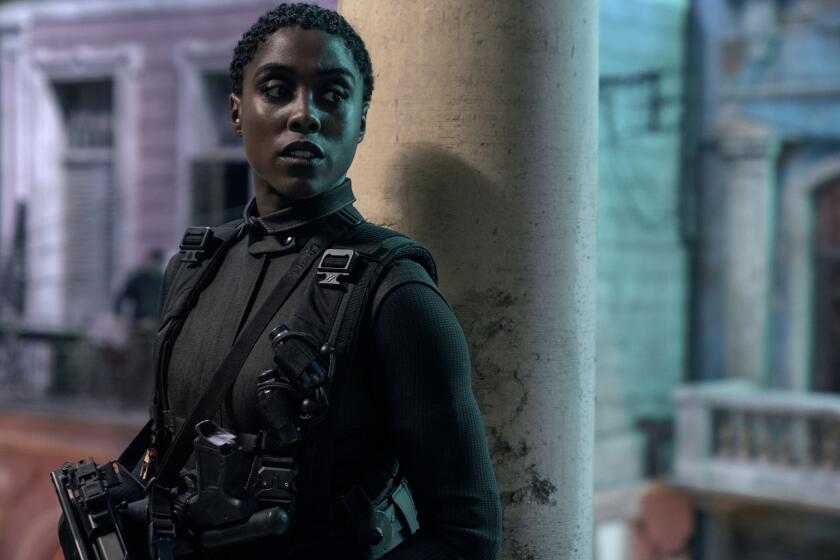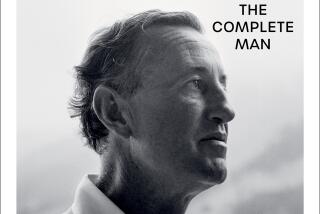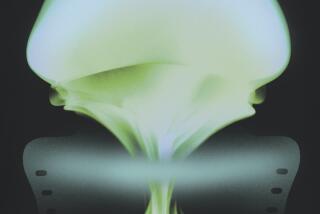Review: James Bond saves the day in âNo Time to Die.â But can he save the future of moviegoing?
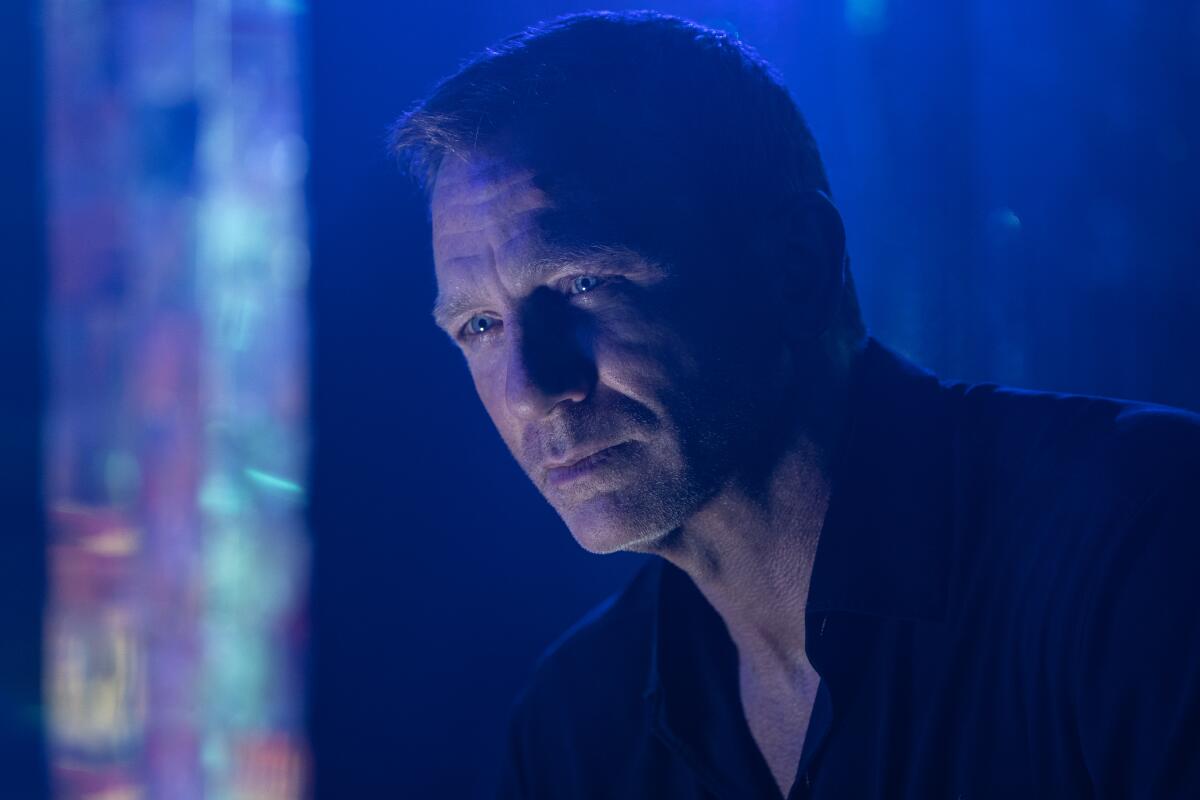
The Times is committed to reviewing theatrical film releases during the COVID-19 pandemic. Because moviegoing carries risks during this time, we remind readers to follow health and safety guidelines as outlined by the Centers for Disease Control and Prevention and local health officials.
The James Bond franchise, now in its 27th iteration, is precious in ways you might not have considered until you settle in to pass two hours and 43 minutes of your 2021 with the long-postponed âNo Time to Dieâ and see Daniel Craig do that hokey 90-degree spin as he fires at the camera.
Dum-duddle-um-dum-dum, goes Monty Normanâs classic theme, and perhaps despite yourself, so may your heart, thrumming a silly little bassline that bounces pleasurably between anticipation and familiarity. Itâs quite something that franchise newcomer Cary Joji Fukunagaâs âNo Time to Dieâ delivers on both those fronts; when it comes to mixing the thrill of the newfangled with nostalgia for the old-fashioned, nobody â still â does it better.
Fukunagaâs movie, which also serves as Craigâs fifth and final Bond installment, works on those levels because itâs actually about those levels: right down to its DNA â gunshot strands of which are evoked in Daniel Kleinmanâs opening title graphics â âNo Time to Dieâ is a twilight movie. Linus Sandgrenâs crepuscular photography tends toward the retrospective, honeyed and melancholy: Thereâs one particularly dazzling shot of LĂŠa Seydouxâs Madeleine Swann â permitting her perma-sulky mouth to twist into the tiniest, saddest of smiles â that simply by the way the evening light trickles through her blond hair, then bursts into sunflare across the screen, delivers a more emotive wallop than words ever could.
And this is despite the springiness of its action, a light dusting of jokes (âMagnets!â says a superscientist at one point, utterly delighted by how freaking cool magnets can be) and an overstuffed plot that feels blissfully irrelevant to the present moment even though itâs about the global threat posed by a virus.
âNo Time to Dieâ is more about aging and creeping obsolescence as about Aston Martins with headlamp-mounted machine guns doing doughnuts on an Italian piazza, though it has those too. Itâs about the old guard making way for the new and about the past resurfacing to scare the living daylights out of the present â all of this before a tomorrow, which as we know, never dies. Though in Craigâs brawny, bruiser continuation of the role, it can get pretty badly knocked about.
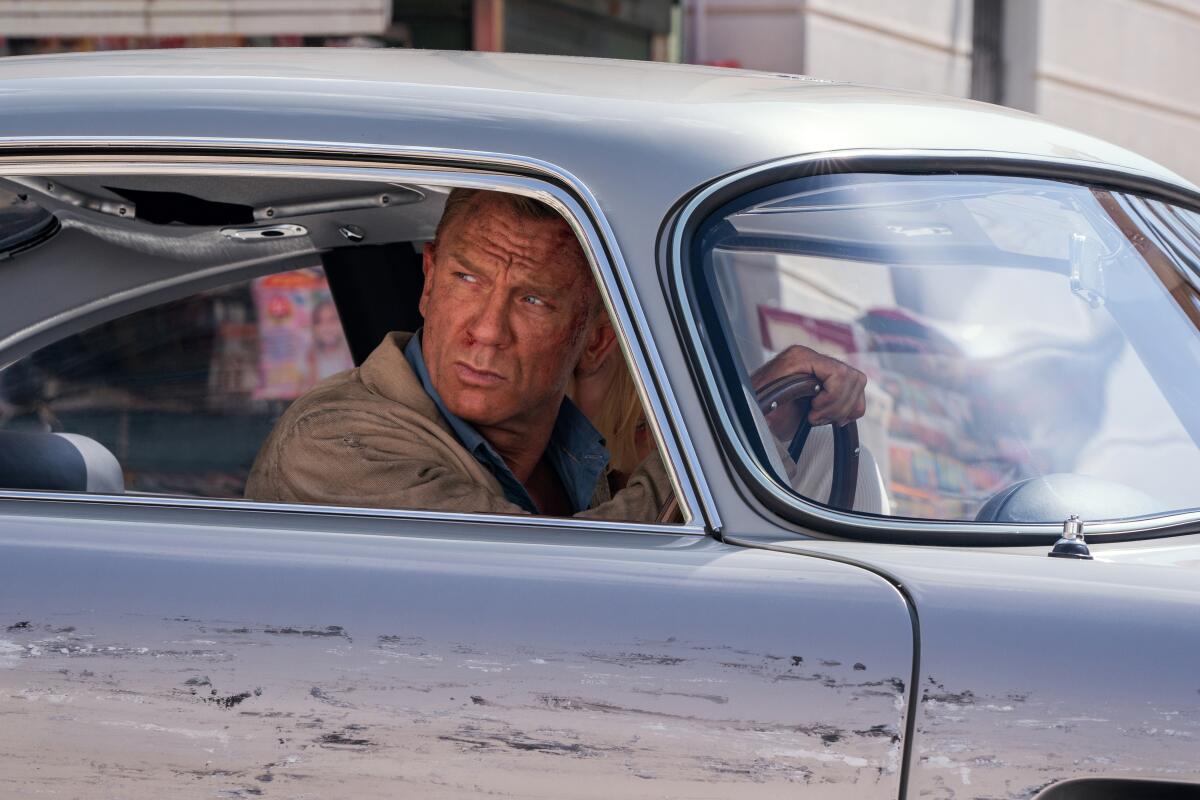
The past for Craig-era Bond is defined by two things: the death of his âCasino Royaleâ paramour Vesper Lynd and his own origin story, including his links to currently incarcerated nemesis Blofeld (Christoph Waltz), which were revealed in âSkyfall.â Both of those spectres threaten Bond here: Early on, Madeleine â the rare Bond Girl who has not only survived the transition from one movie to the next but is also aware of Bond Girls previous â asks James to talk about Vesper.
In return, Madeleine promises to reveal her secrets â which we already know involve her childhood encounter with Rami Malekâs rather anodyne villain Lyutsifer Safin, who we mostly understand is the Big Bad this time out because he has a scarred face and the devilâs name. Bond procrastinates on his confession, asserting that they âhave all the time in the worldâ (youâd think heâd be a bit careful bandying around those words, given that theyâre the last thing he said to his doomed wife in âOn Her Majestyâs Secret Service,â a frequent reference point for the latest filmâs music, themes and romance).
Entombed regrets have a tendency to blow up in oneâs face, which does happen very literally, the way everything here is literal. For this entirely breakable Bond, itâs possible that all the time in the world is not enough.
Five years and one rendition of the rather lovely Billie Eilish theme song later, Bond is alone, having cut loose from Madeleine while still estranged from MI6, who have reassigned his 007 number to hypercompetent new agent Nomi (Lashana Lynch). Nomi finds him in Jamaica, where heâs living a designer-tatty-T-shirt existence pulling ginormous fish out of the sea â but Bond has already been found by his CIA buddy Felix Leiter (Jeffrey Wright) and briefed on the existence of a super-targeted bioweapon thatâs fallen into the worst possible hands.
Lashana Lynch is just the fifth Black actress to occupy major screen time opposite James Bond. The British-Jamaican actress talks representation and her âWandaVisionâ âdaughter.â
Reluctant to get embroiled in this particular save-the-world scenario, Bond soon realizes that basically every surviving person he knows is somehow connected, including, perhaps, his erstwhile boss M (Ralph Fiennes, so good at conveying the personal toll that a lifetime of moral relativism can take). So he takes Felix up on his offer and zips over to Cuba, because in a Bond movie many things that an even slightly cheaper film would set in an adjoining room must instead unfold in an exotic sunny locale, or in Norway or Scotland or a trawler in the middle of the sea or a concrete-lined contested island off the coast of Japan.
In Cuba he meets (all too briefly) Ana de Armasâ greenhorn CIA agent, Paloma; in London heâs back with the old MI6 gang â Q (Ben Whishaw), Moneypenny (Naomie Harris) and Tanner (Rory Kinnear). Inevitably, his frosty relationship with nu-007 thaws under the warming lamps of their mutual respect. Weâve seen caring Bond in some form ever since Craig first donned his double-O tight swimwear in âCasino Royale,â but itâs hard to remember him ever having shared quite so much. Limelight, action setpieces, his pain, his heart, his 007 identity â this guy shares them all, making him, amid all this talk of biology and chemistry, perhaps the most covalent Bond weâve ever seen.
The spread-the-love mentality originates in the screenplay, which is rudimentary in its plotting but nicely democratic in its characterization. You really notice it in a small role like De Armasâ, and in bigger parts like Seydouxâs Madeleine, who is far from the most interesting Bond Girl ever, yet whom screenwriters Fukunaga, Neal Purvis, Robert Wade and good-value puncher-upper Phoebe Waller-Bridge gratifyingly treat like she is.
But even more credit is due to Craig: We know, after his expressions of disgruntlement regarding âSpectre,â what the franchise has done for and to him. Now that his tenure in the tux has ended, perhaps itâs time to evaluate what Craig has done for the franchise. Itâs largely his resilience as an actor that forced Bond to age as he did, and therefore forced a franchise trapped in an endless-reset adolescence to finally acknowledge the passage of time, and the accumulation of regret that James Bond must experience, if heâs a human being at all.

Here, as Bond winces at his own dad-joke wisecracks, allows himself to be impressed by the mad skills of other agents and doesnât even try to see if Ana De Armasâ silken evening dress will shuck soundlessly to the floor at the drop of a double entendre, Craig reveals himself as perhaps the most generous actor to have inhabited the role. And not only toward the rest of the cast, but toward the very idea of Bond itself. Craig sets Bond free from the prison of forgetfulness that has previously trapped him like a caveman in ice, though the price is steep, and it remains to be seen if future installments can continue to pay it.
This is not to suggest that your favorite spy is given too much to emote and too little to do. Even retired, he lives and lets die in often spectacular fashion, delivering a contradictory fusion of cordon bleu action with comfort-food satisfaction that is specific to Bond, even in our age of ubiquitous franchise filmmaking. Itâs a lot because of his longevity â next year will be 60 years since the release of âDr. Noâ â and the Pavlovian memory encoded in all those familiar Bond-world motifs: the tricked-out cars and gadget watches, all the Ms and Qs and ridiculously monikered bikini-clad ladies weâve loved and lost. And beyond that, thereâs the fond memory of those suburban living room Christmases with uncles and grandfathers sliding gently into tryptophan snoozes while on TV 007 waggles his eyebrows at some rando with such slippery suavity that all her zippers unzip.
This shared history means that Bond can make its billions by granting a few hours of meticulously made escapism (even maybe âoblivionâ as Safin darkly hints) to a more broadly intergenerational casual fanbase than many other film series can boast. These audience members, who are fond of the mythos but actually have other things in their lives, make it a true four-quadrant property, perhaps the only one left that isnât led by the nose by fan service and unwieldy shared universes.
Every new Bond movie is a referendum. Not just on the ongoing viability of a franchise that has been part of the cinematic landscape for six decades â fading in and out of relevance, moving through cycles of creakiness, campiness and classiness â but also on the vitality of old-model popular cinema, which is threatened now as never before. If the release of âNo Time to Dieâ marks a widespread return to the cinema, it will be nicely fitting that itâs Bond, a gentleman franchise in a world of whippersnappers, holding the door open on the way in. And then reminding us, on the way out, that every farewell is also a hello, and every time to die is a time to be reborn.
Now that âNo Time to Dieâ has officially had its world premiere, all your burning James Bond questions can be answered. (Without spoiling all the fun.)
'No Time to Die'
Rating: PG-13, for sequences of violence and action, some disturbing images, brief strong language and some suggestive material
Running time: 2 hours, 43 minutes
Playing: Opens Oct. 8 in general release
More to Read
Only good movies
Get the Indie Focus newsletter, Mark Olsen's weekly guide to the world of cinema.
You may occasionally receive promotional content from the Los Angeles Times.
